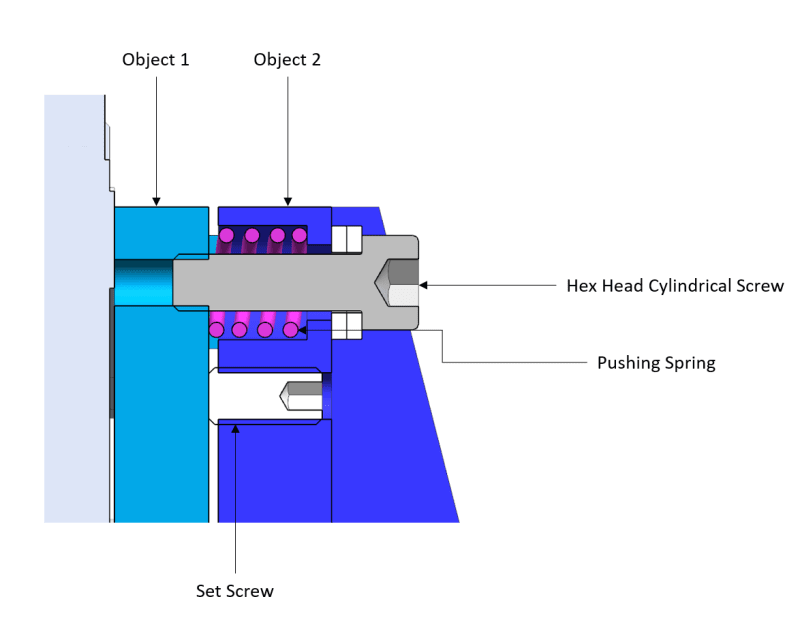N.More
Aerospace
- Oct 7, 2021
- 4

Hello Everyone,
Could someone please explain how the adjustment mechanism shown in the image works?
There should be relative motion between Object 1 and Object 2. I have shown only one screw, so in this case, one should be able to move left and right.
The set screw is seen to make contact and the Hex Head Screw is engaging the thread in Object 1.
How exactly is everything working together here? What is the sequence of assembly here? How do the parts relatively move to either increase or decrease the space between them? And finally, once the desired position is achieved, how is it fixed?
Many Thanks!

